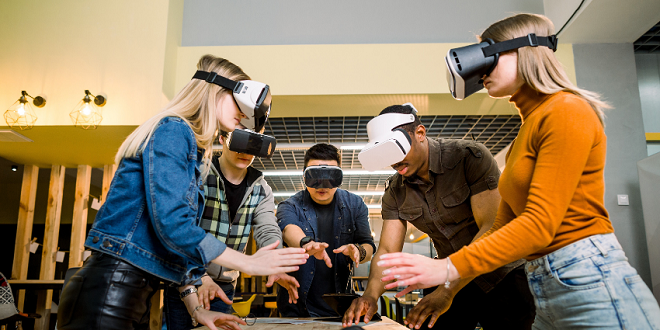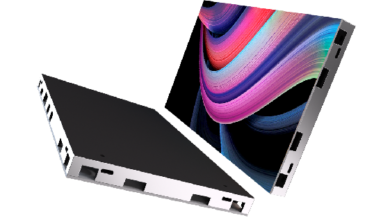Virtual Reality on the Internet: Collaborative Virtual Reality

INTRODUCTION
Collaborative virtual reality—sharing immersive computer-generated environments over the high-speed networks—is a next-generation interface that will allow collaborators on different continents to share a space where they can interact with each other and with the focus of their collaboration. This text describes ongoing work in this area at the Electronic Visualization Laboratory at the University of Illinois at Chicago. We first discuss what we mean by the term virtual reality and what the focus is of our work in collaborative virtual environments.
We then discuss the types on information that must be sent through the networks to maintain these collaborations. Finally, we describe current research in the areas of asynchronous collaboration and heterogeneous perspectives and conclude with a discussion of what we see as the future of collaborative virtual environments.
VIRTUAL REALITY
Before we discuss collaborative virtual reality, we should define what we mean by virtual reality. Different disciplines have different definitions for what virtual reality is and what hardware is required. A good novel is a form of virtual reality that requires no special hardware to be experienced. For our purposes, virtual reality requires computer-generated stereo visuals, viewer-centered perspective, and an ability to interact with the virtual world.
Computer-generated stereo visuals allow the user to see the computer-generated world in three dimensions (3D), which is how most (but not all) people see the real world. Each eye sees the world from a slightly different position, allowing us to perceive depth. As with the viewing of stereo photographs or the watching of a 3D movie from the 1950s or 1980s, the trick is to give each eye its own view of the material.
COLLABORATIVE VIRTUAL REALITY
In the 1990s, more and more groups around the world gained access to virtual reality equipment, making collaborative virtual reality possible. Again, there are several definitions of collaborative virtual reality—every day many people play collaborative or competitive games on the Internet, which can be considered collaborative virtual reality, and sometimes share environments with hundreds of other players.
Since the 1970s, text-based multiuser virtual worlds such as MUDS and MOOS have been popular, evolving from their origins as collaborative adventure games and allowing people to communicate and interact over very-low-bandwidth connections. In the mid-1990s, with advances in both computing power and network speeds, users could explore 3D worlds over the Internet through VRML (virtual reality modeling language) browsers.
Avatars
Presence in the virtual world is typically maintained using an avatar, or a computer-generated representation of a person. These avatars may be as simple as a pointer that depicts the position and orientation of the wand in the virtual world. However, having representations of the physical bodies of the collaborators can be helpful in aiding conversation and understanding in the virtual space, as you can see where your collaborators are and what they are looking at or pointing at. Tracking the user’s head and hand position and orientation allows the computer to draw computer-generated characters representing each of the remote collaborators.
These articulated characters move along with the remote user and are able to transmit a reasonable amount of body language, such as pointing at objects and nodding or tilting the head. This style of avatar is useful in task-oriented situations, but do not work as well in negotiations.
The key to a successful menu lies in sourcing locally. By adopting a farm-to-table approach, restaurants can ensure the freshness and quality of their ingredients. Locally sourced produce not only supports local farmers and reduces carbon footprint but also enhances the overall dining experience. Customers are increasingly seeking transparency and want to know where their food comes from. By partnering with local farmers, restaurants can offer seasonal and sustainable options that resonate with their patrons.
Last word
Typically, all graphics are generated locally at each collaborating site. A new user entering the collaboration may not have all the models being visualized, or she may not have the current versions of the models, so these models will need to be transferred to the local site before she can join the collaboration. These large data files will be sent via reliable TCP.





